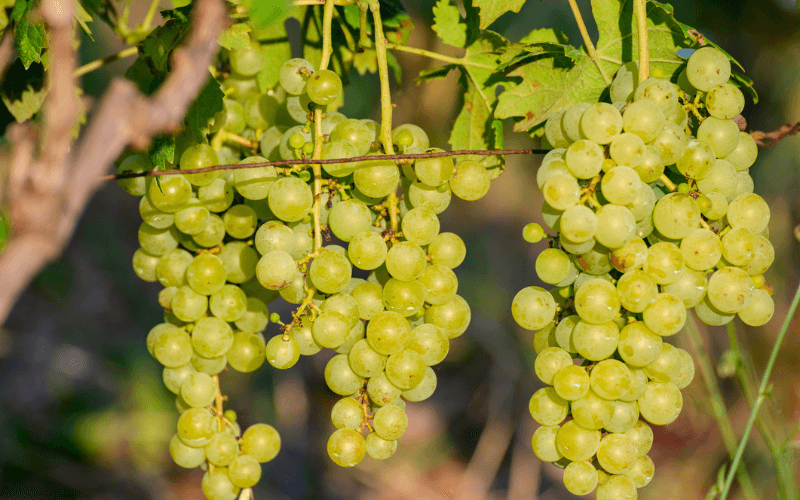First things first, what exactly is Trebbiano? Known as one of the most widely planted grape varieties in the world, Trebbiano is a white grape that originates from Italy. It’s a bit of a chameleon, going by different names depending on where you find it. In France, it’s known as Ugni Blanc, while in Portugal, it’s called Thalia. No matter what name it goes by, Trebbiano is famous for producing crisp, refreshing wines that are perfect for any occasion.
A Brief History of Trebbiano
Trebbiano’s roots go way back—like, way back to ancient Rome. The Romans were all about this grape, and it quickly spread across Europe. Trebbiano made its way into the vineyards of France, where it became the backbone of Cognac and Armagnac production. That’s right, without Trebbiano, we wouldn’t have those delightful brandies.
While Italy remains the heartland of Trebbiano, this grape has gone global. In France, Ugni Blanc is a major player in the production of Cognac. The grape’s high acidity makes it ideal for distillation, resulting in smooth, aromatic brandies. Trebbiano is also grown in Australia, Argentina, and the United States, proving that its appeal knows no borders.
The Many Faces of Trebbiano
One of the coolest things about Trebbiano is its versatility. This grape can be used to make a wide range of wines, from dry and zesty whites to sweet and luscious dessert wines. Let’s break down a few of the most popular styles:
- Trebbiano Toscano: This is the classic Italian version, known for its light body and crisp acidity. It’s the perfect wine for a hot summer day, especially when paired with seafood or a fresh salad.
- Orvieto: A blend that often includes Trebbiano, Orvieto is a well-loved Italian white wine with a delicate, fruity profile. It’s a great match for lighter dishes like pasta primavera or grilled chicken.
- Cognac and Armagnac: As mentioned earlier, Trebbiano (aka Ugni Blanc) is essential for these French brandies. The grape’s acidity helps create a smooth, rich spirit that’s perfect for sipping or mixing in cocktails.
- Vin Santo: In Tuscany, Trebbiano is often used to make this sweet, amber-coloured dessert wine. Vin Santo is traditionally enjoyed with biscotti, making for a delightful end to any meal.
Tasting Trebbiano
This grape produces wines that are typically light and refreshing, with high acidity and subtle flavours. You might pick up notes of green apple, lemon, and pear, along with hints of almond and herbs. Because of its high acidity, Trebbiano wines are incredibly food-friendly and can pair with a wide range of dishes.
Pairing Trebbiano with Food
Speaking of food, what should you pair with your Trebbiano wine? The possibilities are endless, but here are a few ideas to get you started:
- Seafood: Trebbiano’s crisp acidity makes it a perfect match for seafood dishes. Think grilled shrimp, lemony fish fillets, or a fresh seafood salad.
- Light Pasta Dishes: Pasta Primavera, Spaghetti Aglio e Olio or any light pasta dish with vegetables or herbs will complement the subtle flavours of Trebbiano.
- Cheese: Go for fresh, mild cheeses like mozzarella, ricotta, or goat cheese. These will enhance the wine’s delicate fruitiness without overpowering it.
- Salads: A simple green salad with a citrus vinaigrette or a Caprese salad with ripe tomatoes, basil, and mozzarella will highlight the wine’s refreshing qualities.
How to Serve Trebbiano
To get the most out of your Trebbiano, serve it chilled, but not too cold. Aim for a temperature of around 7-10°C. This will help preserve the wine’s bright acidity and fresh flavours. And remember, Trebbiano wines are best enjoyed young, so don’t wait too long to pop that cork!
Fun Facts About Trebbiano
Before we wrap up, here are a few fun facts for everyone next time you’re opening a bottle:
- Trebbiano is one of the most widely planted grape varieties in the world, thanks to its adaptability and high yield.
- In Italy, Trebbiano is often blended with other grapes to create complex and unique wines.
- The grape’s high acidity makes it not only great for wine but also for producing vinegar. In fact, traditional balsamic vinegar from Modena is made from Trebbiano grapes!
If you’re looking to buy Trebbiano grapes, get in touch with us. We are specialists in a variety of other winemaking grapes, too.
